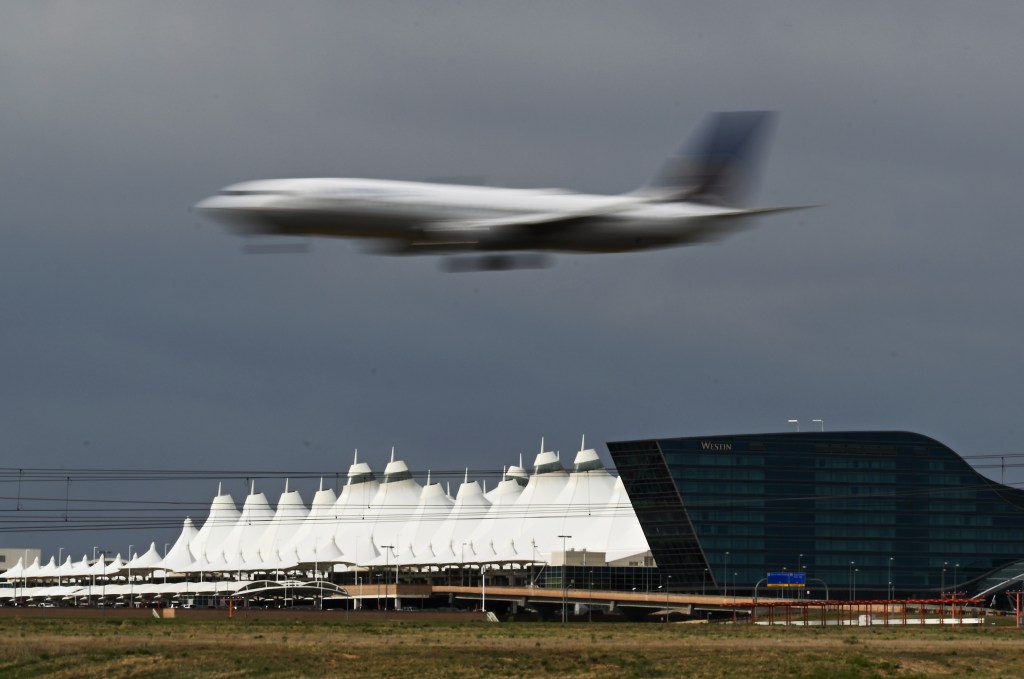World News
Colorado Aerotropolis includes regional development efforts around DIA

After years of discussions and planning, a partnership between urban areas has announced efforts to officially get an aerotropolis – an airport city – off the ground around Denver International Airport.
The group of elected officials and staffers from cities, Adams County, Denver and the airport are advancing their plans to transform undeveloped areas around DIA into a commerce hub, a magnet for innovative businesses and an even more powerful economic engine for metro Denver and Colorado.
A website for Colorado Aerotropolis pitches the region to ‘makers and manufacturers, builders and developers’. At the heart of the call is DIA, the third busiest airport in the US and the sixth busiest in the world.
And another big selling point is that Denver’s airport, which opened in February 1995 on land annexed from Adams County, is its location: surrounded by thousands of acres of vacant land, not in the center or edges of a dense cityscape .
“A lot of times airports are built in areas that are already quite populated and that’s going to be somewhat limiting,” said Jenni Hall, director of Adams County’s Community and Economic Development.
“Denver International Airport is the second largest in the world by land mass,” said Ken Cope, senior vice president of real estate development at DIA. “We have the luxury of having a very large canvas to paint on.”
The Aerotropolis Regional Committee consists of representatives from Adams County; the cities of Aurora, Brighton, Commerce City, Federal Heights and Thornton; the City and County of Denver; and DIA. Members first signed a marketing agreement about eight years ago, Adams County Commissioner Emma Pinter said.
“The official launch is a formal way to announce to the world that the aerotropolis around DIA is open for business. In all our jurisdictions there are plots of land for sale and ready for development,” said Pinter.
An aerotropolis is designed to place cities around a central airport, taking advantage of the connectivity that air travel provides. Hall said there are about 16 such developments worldwide. A public-private partnership is in the offing an aerotropolis in Atlantahome to Hartsfield-Jackson Atlanta International Airport, the busiest in the world.
“The idea of an aerotropolis is one that is much more acceptable in foreign markets,” Cope said.
The model of building around an airport is something the U.S. is just beginning to embrace, Cope added.
The concept encountered early turbulence in Colorado. Adams County said Denver’s original vision for developing the area conflicted with the 1988 agreement for Denver’s annexation of the land.
The intergovernmental agreement that paved the way for the construction of DIA, replacing Denver’s Stapleton International Airport, was amended in 2016.
“That amendment included a committee that was created to promote regionalism and development in the area,” Cope said. “But land development takes time.”
Pinter, Hall and Cope all said the regional committee has focused on collaboration between the different entities.
“I now believe we are at a point where we, along with Adams County, the airport and surrounding communities, are ready to accelerate development,” Cope said. “We are working together to ensure that the development is coherent and that you have the right infrastructure.”
The current budget of the regional committee is $1.03 million, half of which comes from the airport and the other half from the other members of the regional committee.
The types of businesses the committee believes are natural for the area include sectors such as agriculture, biomedical, quantum computing, energy, advanced manufacturing and transportation. The committee’s talking points include the area’s renowned colleges and research facilities, well-educated workforce and the 28 international nonstop destinations served by DIA.
A study published in 2023 found that DIA’s total economic contribution to Colorado’s economy was approximately $36.4 billion. The airport can help stimulate further business opportunities and compatible development near the airport and also in the region, Phil Washington, the airport’s CEO, said in a statement.
Pinter noted that the area generally encompassing the Aerotropolis contains all of the state’s intersecting highways, including Interstates 70, 25 and 76.
“We also have rail lines that serve all sides of the aerotropolis,” Pinter said. “Whether you transport goods by rail, highway or air, this is a central location where companies can establish themselves.”
Aurora Mayor Mike Coffman said in a statement that Colorado Aerotropolis will provide companies with direct access to “current powerhouses” such as the Gaylord Rockies resort and convention center, the Fitzsimons Innovation Community and the Anschutz Medical Campus.
The Aurora Highlands housing development, which held its grand opening in 2023, is located in the plan area.
Hall said the region is also part of a designated foreign trade zone, which provides specific tax and customs benefits for the global movement of goods.
When Cope thinks of the Aerotropolis, he sees an entire city taking shape. He said there is an opportunity to build something similar to the existing metro area.
Denver annexed 53 square miles, or 34,000 acres for DIA. The airport has six runways and is approved for twelve.
“Even after we build all 12 runways, there will still be approximately 16,000 acres that the airport will own for commercial development,” Cope said.
Get more real estate and business news by signing up for our weekly newsletter, On the Block.













